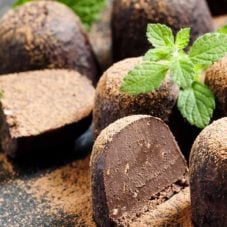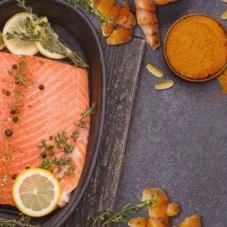Nutrition
15 Anti-Inflammatory Foods To Include In Your Diet
Inflammation is a vital component of your body’s immune response. Think of it as your body’s way of telling you that it’s doing its job fighting off intruders, which is a great thing! Acute or short-term inflammation is GOOD, but chronic inflammation is BAD. While there are modern drugs and supplements that can treat inflammation, we’ll focus on the diet side of things. Today, we’ll talk about the top 15 anti-inflammatory foods that can help manage chronic inflammation symptoms.
Table of Contents
What are the health risks associated with chronic inflammation?
Chronic inflammation – which can go on for years – can pose a serious threat to your health. It drastically increases the risk for many diseases (1, 2), such as:
| Type 2 diabetes | Hypertension | Arthritis and joint disease |
| Cardiovascular disease | Chronic kidney disease | Depression |
| Allergies | Cancer | Metabolic syndrome |
| Polycystic ovary syndrome (PCOS) | Non-alcoholic fatty liver disease (NAFLD) | Chronic obstructive pulmonary disease (COPD) |
So, what exactly is behind chronic inflammation?
There are several factors (1, 2):
- A diet rich in pro-inflammatory foods like refined carbs, deep-fried food, sugar-sweetened beverages, soda, red meat, processed meat, artificial trans-fat, and vegetable oils.
- Age
- Lack of physical activity
- Obesity
- Tobacco smoking
- Stress
- Sleep disorders
- Exposure to environmental and industrial pollutants
Why is eating anti-inflammatory foods a must for those with chronic inflammation?
As the name suggests, anti-inflammatory foods are healthy, nutritious foods that reduce inflammation levels in the body. They usually come in the form of whole foods, NOT processed foods. Whole foods are minimally processed, single-ingredient foods that do not contain a ton of sugar, additives, and preservatives. They typically go straight from farm to table, still bursting with freshness, flavor, and nutrients!
Anti-inflammatory medications like corticosteroids do help, but when taken long term, they can have a lot of undesirable side effects (3). This is why switching to an anti-inflammation diet (like the Mediterranean diet for example) is highly recommended for anyone suffering from chronic inflammation. By giving your body the right fuel, it can repair the damage done by prolonged inflammation. It’s a healthy, long-term solution!
What are examples of anti-inflammatory foods to include in your diet?
Here’s an infographic summarizing the different foods that help fight inflammation. Feel free to print this out and bring this list of anti-inflammatory foods the next time you go on a grocery run!
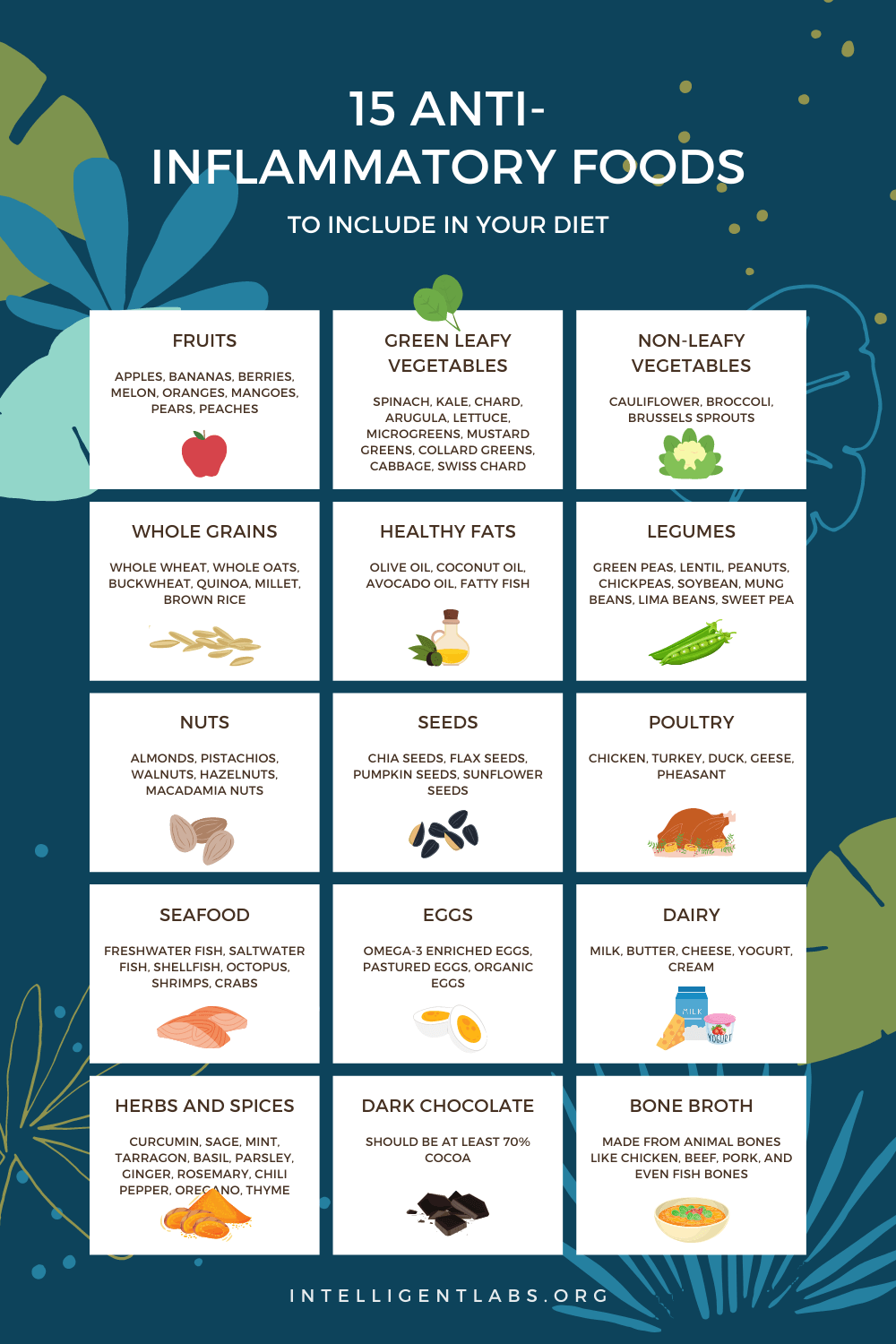
Fruits
The sky’s the limit when it comes to eating fruits on an anti-inflammation diet. Eat a variety of fresh fruits like apples, bananas, berries, melons, oranges, mangoes, pears, peaches, etc. every day! A diet rich in fruits and vegetables is associated with a lower risk of chronic diseases and healthy weight (4).
Green, leafy vegetables
A diet rich in green, leafy vegetables like spinach, kale, chard, arugula, lettuce, microgreens, mustard greens, collard greens, cabbage, and Swiss chard is associated with a decline in C-reactive protein levels (CRP is an inflammatory marker) as well as an increase in plasma beta-carotene (5).
Researchers say this type of anti-inflammatory food will help lower the risk of various chronic diseases, including eye diseases that involve inflammation, such as age-related macular degeneration, dry eye, and glaucoma (6).
Non-leafy vegetables
Weight loss in obese and overweight subjects has been linked to a decrease in pro-inflammatory markers (7). Now, one way to lose weight is by increasing the intake of veggies. But not all veggies are created equal. For instance, high-fiber, low glycemic load veggies like cauliflower, broccoli, and brussels sprouts can help with weight loss, while starchy veggies like corn, peas, and potatoes may do the opposite (8).
Healthy fats
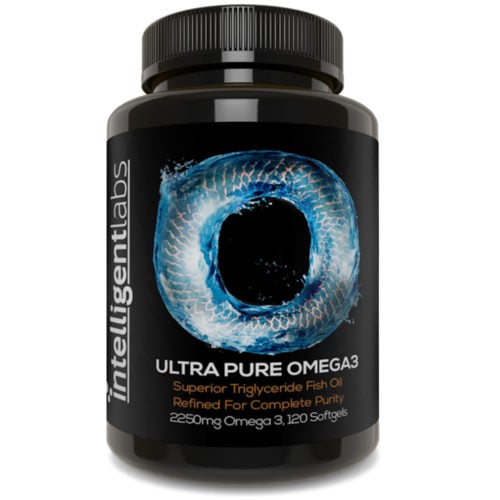
Healthy fats may not sound like real anti-inflammatory food, but they are!
Fats like olive oil, coconut oil, avocado oil, and fatty fish help improve insulin sensitivity, lower inflammation levels, and reduce fat storage in the body. These healthy oils also help reduce the risk of cardiovascular disease (9).
Check out our Omega-3 Fish Oil. Each serving contains 2,250mg of omega-3 fatty acids. It has no taste, no smell, and you won’t get fish-smelling burps with our fish oil, perfect for those who aren’t fans of fish!
Whole grains
Whole grains are grains that are minimally processed. They have all 3 grain parts intact – the bran (outer layer), the germ (embryo), and the endosperm (the germ’s food supply). Compared to refined grains, whole grains provide more protein, fiber, vitamins, and minerals (10). Examples of whole grains include whole wheat, whole oats, buckwheat, quinoa, millet, and brown rice.
Legumes
Just like fruits and vegetables, legumes like green peas, lentils, peanuts, chickpeas, soybean, mung beans, lima beans, and sweet pea are also nutrient-rich. They contain lectins and peptides that have anti-inflammatory properties. While lectin is said to interfere with mineral absorption, the benefits far outweigh any risk (plus, soaking and cooking legumes can inactivate them). Legumes and other lectin-containing foods lower the risk of heart disease and type 2 diabetes (11).
Nuts
Nuts like almonds, pistachios, walnuts, hazelnuts, and macadamia nuts are rich in omega-3 fatty acids, fiber, magnesium and other dietary minerals, and antioxidants. Frequent nut consumption is linked to lower inflammation levels in the body as well as improved lipid profiles, lower blood pressure, and decreased insulin resistance (12).
Herbs and spices
According to Britannica, there are more than 70 herbs and spices. These not only add flavor to our favorite dishes, but most also have health benefits ranging from anti-inflammatory to antioxidant and antimicrobial effects.
The following herbs and spices were found to exhibit anti-inflammatory effects (13):
| Curcumin | Sage | Mint |
| Tarragon | Basil | Parsley |
| Ginger | Rosemary | Chili pepper |
| Oregano | Thyme |

Curcumin (a compound found in Turmeric) is an especially potent anti-inflammatory spice. However, the only problem with consuming turmeric is that curcumin only comprises a mere 3% when measured against the weight of turmeric (14).
So, if you want to experience curcumin’s health benefits, it’s best to take it in supplement form, specifically in Meriva Curcumin form.
We offer two soy-free varieties:
Seeds
Chia seeds, flax seeds, pumpkin seeds, and sunflower seeds are a few examples of anti-inflammatory foods in this category. Seeds are extremely nutritious as they contain all the nutrients and materials needed to develop into plants. A diet rich in nuts and seeds may reduce the risk of disease and prolong life expectancy (15).
Dairy
Dairy products are rich in calcium and are known for their bone-building properties. Examples include milk, butter, cheese, yogurt, and cream. Dairy product consumption may have significant anti-inflammatory effects amongst healthy individuals and those suffering from metabolic syndrome (16).
Dark chocolate
Dark chocolate may not be everyone’s favorite type of chocolate, but when it comes to health benefits, it’s far healthier than its “lighter” cousins. Any chocolate that contains at least 70% cocoa is considered “dark”. It’s chock-full of antioxidants such as bioflavonoids, resveratrol, and PQQ that help reduce inflammation and lowers your risk of heart disease (17, 18).
Bone broth
Long before bone broth started making its rounds in the wellness industry, people have been drinking warm bone broth to relieve fever and colds for centuries. Depending on the type of bone used and the veggies added, this popular folk remedy is a great source of collagen, amino acids, and minerals like calcium, magnesium, potassium, and phosphorus (19).
So far, early studies point to the amino acids glycine and arginine to be behind bone broth’s potential anti-inflammatory effect (20, 21).
Here’s an infographic on how to make a simple bone broth collagen recipe:
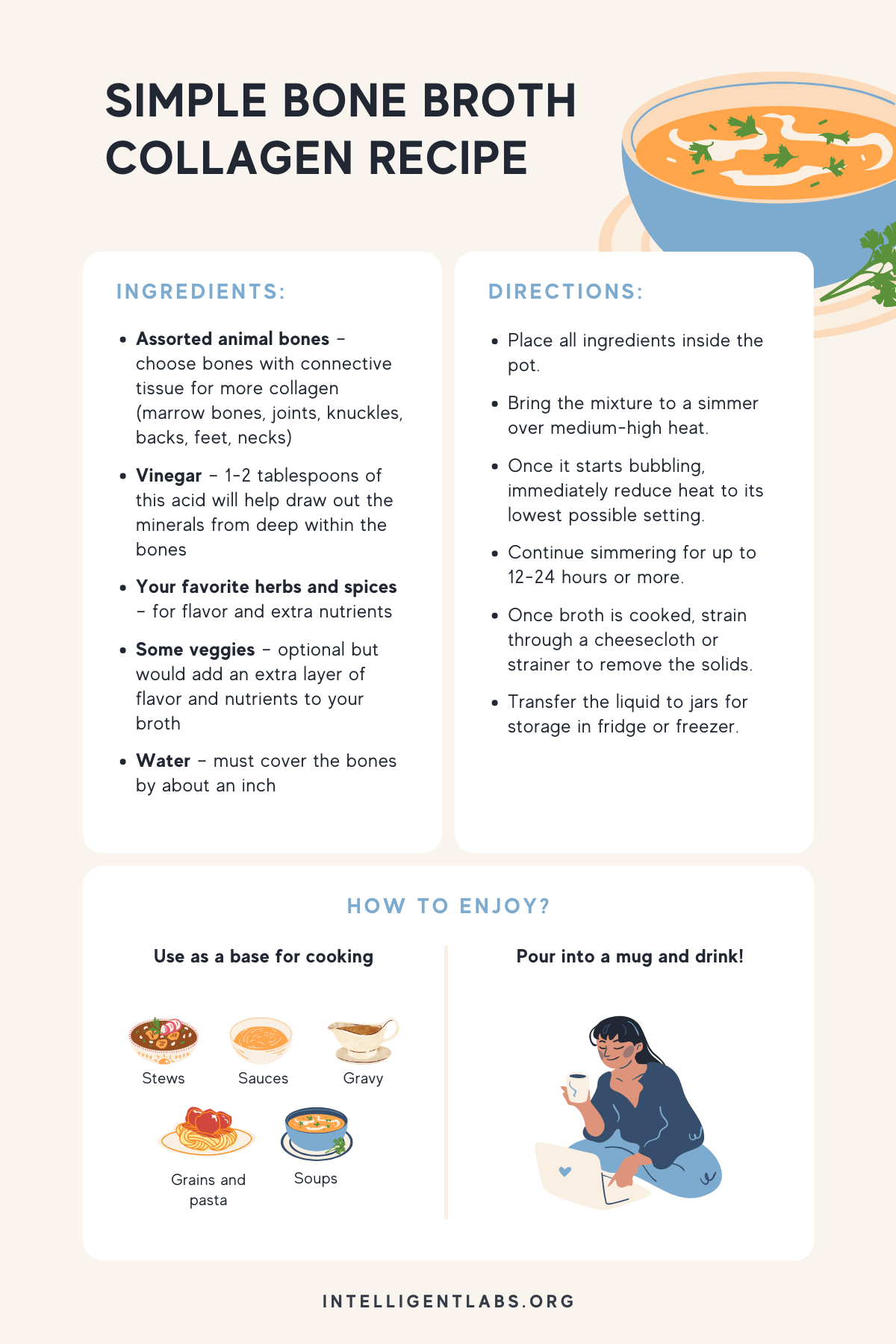
Pro tip: If you’re looking to boost your collagen intake, but don’t have lots of time to make bone broth, we would suggest taking our Collagen Peptides instead. Each scoop contains 11g of hydrolyzed type 1 and 3 collagen from grass-fed cows in New Zealand!
Poultry
Red meat is rich in nutrients but eating too much of it can lead to inflammation and oxidative stress, thereby causing various health issues (22). White meat, or more specifically, poultry meat like chicken and turkey are better on an anti-inflammatory diet. White meat consumption may also help reduce the risk of gastric cancer (23).
Seafood
Seafood like fish and shellfish are rich in omega-3 fatty acids (especially fatty fish like salmon, tuna, sardines, and mackerel), as well as a long list of vitamins and minerals. Some fish species are low in fat but still extremely rich in nutrients (24). Eating a 3 to 6-ounce serving of fatty fish at least 2-4 times a week may lower inflammation and protect the heart (25).
Eggs
Eggs are one of the healthiest foods on the planet. After all, if left to hatch, it will develop into a living animal! Eggs are an excellent source of protein, iron, vitamins A, B2, and B12, choline, zinc, and calcium (26).
According to a recently published systematic review, eggs have both pro and anti-inflammatory action. Amongst healthy populations, it has a pro-inflammatory effect (which is good since acute inflammation is an important immune response!). However, amongst obese and overweight individuals, the anti-inflammatory effects were more pronounced (27).
Here’s a table summary of these 15 anti-inflammatory foods:
| Type of food | Examples |
| Fruits | apples, bananas, berries, melons, oranges, mangoes, pears, peaches |
| Green leafy vegetables | spinach, kale, chard, arugula, lettuce, microgreens, mustard greens, collard greens, cabbage, Swiss chard |
| Non-leafy vegetables | cauliflower, broccoli, brussels sprouts |
| Whole grains | whole wheat, whole oats, buckwheat, quinoa, millet, brown rice |
| Healthy fats | olive oil, coconut oil, avocado oil, fatty fish |
| Legumes | green peas, lentil, peanuts, chickpeas, soybean, mung beans, lima beans, sweet pea |
| Nuts | almonds, pistachios, walnuts, hazelnuts, macadamia nuts |
| Seeds | chia seeds, flax seeds, pumpkin seeds, sunflower seeds |
| Poultry | chicken, turkey, duck, geese, pheasant |
| Seafood | freshwater fish, saltwater fish, shellfish, octopus, shrimps, crabs |
| Eggs | omega-3 enriched eggs, pastured eggs, organic eggs |
| Dairy | milk, butter, cheese, yogurt, cream |
| Herbs and spices | curcumin, sage, mint, tarragon, basil, parsley, ginger, rosemary, chili pepper, oregano, thyme |
| Dark chocolate | should be at least 70% cocoa |
| Bone broth | made from animal bones like chicken, beef, pork, and even fish bones |
What are the benefits of eating anti-inflammatory foods?
All the non-inflammatory foods listed above are healthy and delicious. But if your taste buds have been finely tuned to appreciate only the deep fried, artificially sweetened, and high calorie variety, then you may have a hard time adjusting to the natural flavors of whole foods! Hopefully, the benefits below will help convince you to make the switch to a diet that will fight inflammation.
Healthy weight
Unlike all the empty calories you get in many processed junk foods, eating a bunch of fruits and veggies daily helps promote a healthy weight. This will then lead to a reduction in pro-inflammatory markers since weight loss is also a critical factor in reducing inflammation (28)!
Improves insulin sensitivity
With the infusion of healthy fats into your diet, you also get to experience an improvement in insulin sensitivity. This bodes well for your health since insulin sensitivity helps improve blood sugar levels, which then reduces your risk of type 2 diabetes, PCOS, metabolic syndrome, and more (29).
Related article: How To Increase Insulin Sensitivity Naturally
Decreased risk for various diseases
Throughout this article, we’ve cited plenty of studies that support the claim that eating anti-inflammatory foods will help reduce your risk for various chronic inflammation-related diseases.
Better mood and energy
Eating healthy not only lowers chronic inflammation, but you also get to experience a mental boost! Research suggests that there is a positive correlation between happiness and a healthy diet comprised primarily of fruits and veggies (eat at least 3 portions per day for max happiness)!
Ready to switch to an anti-inflammatory diet?
Eating nutrient-dense, anti-inflammatory foods such as the ones we shared in our anti-inflammatory food list above can do wonders for your health. You not only get to keep your chronic inflammation in check and lower your risk of all the harm it can bring, but it also contributes to a fit and happy you!
💬 Something on your mind? Share your thoughts in the comments. We love hearing from curious minds.
📩 And while you’re here, join our newsletter for more smart stuff (and secret perks)!
References:
(1) Chronic Inflammation, Roma Pahwa; Amandeep Goyal; Ishwarlal Jialal.
StatPearls [Internet].
(2) Chronic inflammation in the etiology of disease across the life span, David Furman, Judith Campisi, Eric Verdin, Pedro Carrera-Bastos, Sasha Targ, Claudio Franceschi, Luigi Ferrucci, Derek W. Gilroy, Alessio Fasano, Gary W. Miller, Andrew H. Miller, Alberto Mantovani, Cornelia M. Weyand, Nir Barzilai, Jorg J. Goronzy, Thomas A. Rando, Rita B. Effros, Alejandro Lucia, Nicole Kleinstreuer & George M. Slavich, Published: 05 December 2019
(3) Corticosteroids, Last reviewed by a Cleveland Clinic medical professional on 01/20/2020. Taken from https://my.clevelandclinic.org/health/drugs/4812-corticosteroids
(4) Fruit and Vegetable Intake: Benefits and Progress of Nutrition Education Interventions- Narrative Review Article, Dhandevi PEM and Rajesh JEEWON, Iran J Public Health. 2015 Oct; 44(10): 1309–1321.
(5) Rising Plasma Beta-Carotene Is Associated With Diminishing C-Reactive Protein in Patients Consuming a Dark Green Leafy Vegetable–Rich, Low Inflammatory Foods Everyday (LIFE) Diet, Hannah Schultz, Gui-Shuang Ying, PhD, […], and David M. Dunaief, Volume 15, Issue 6
(6) Study Finds Diet Abundant in Leafy Vegetables May Reduce Risk of Diseases Involving Chronic Inflammation, By Kristen Mulvihill, Scheie Vision Summer 2020
(7) Weight loss is a critical factor to reduce inflammation, Vittorio Emanuele Bianchi, Clin Nutr ESPEN . 2018 Dec;28:21-35.
(8) Changes in Intake of Fruits and Vegetables and Weight Change in United States Men and Women Followed for Up to 24 Years: Analysis from Three Prospective Cohort Studies, Monica L. Bertoia ,Kenneth J. Mukamal, Leah E. Cahill, Tao Hou, David S. Ludwig, Dariush Mozaffarian, Walter C. Willett, Frank B. Hu, Eric B. Rimm, Published: September 22, 2015.
(9) Good Fats versus Bad Fats: A Comparison of Fatty Acids in the Promotion of Insulin Resistance, Inflammation, and Obesity, James J. DiNicolantonio, James H. O’Keefe, Mo Med. 2017 Jul-Aug; 114(4): 303–307.
(10) WHAT IS A WHOLE GRAIN? Article from: https://wholegrainscouncil.org/what-whole-grain
(11) The Nutrition Source, https://www.hsph.harvard.edu/nutritionsource/anti-nutrients/lectins/
(12) The effect of nuts on inflammation, Jordi Salas-Salvadó, Patricia Casas-Agustench, Michelle M Murphy, Patricia López-Uriarte, Monica Bulló, Asia Pac J Clin Nutr . 2008;17 Suppl 1:333-6.
(13) Herbs and Spices- Biomarkers of Intake Based on Human Intervention Studies – A Systematic Review, Rosa Vázquez-Fresno, Albert Remus R Rosana, Tanvir Sajed, Tuviere Onookome-Okome, Noah A Wishart 1, David S Wishar, Genes Nutr . 2019 May 22;14:18.
(14) Curcumin Content of Turmeric and Curry Powders, Reema F. Tayyem, Dennis D. Heath, Wael K. Al-Delaimy & Cheryl L. Rock, Pages 126-131 | Published online: 18 Nov 2009
(15) Consumption of Nuts and Seeds and Telomere Length in 5,582 Men and Women of the National Health and Nutrition Examination Survey (NHANES), L A Tucker, J Nutr Health Aging . 2017;21(3):233-240.
(16) Article from: https://advances.nutrition.org/
(17) Article from: https://ajcn.nutrition.org/
(18) Cocoa polyphenols and inflammatory markers of cardiovascular disease, Nasiruddin Khan, Olha Khymenets… Nutrients . 2014 Feb 21;6(2):844-80.
(19) Essential and toxic metals in animal bone broths, Der-Jen Hsu, Chia-Wei Lee, Wei-Choung Tsai, Yeh-Chung Chien… Food Nutr Res . 2017 Jul 18;61(1):1347478.
(20) Arginine and citrulline and the immune response in sepsis, Karolina A P Wijnands, Tessy M R Castermans… Nutrients . 2015 Feb 18;7(3):1426-63.
(21) Multifarious Beneficial Effect of Nonessential Amino Acid, Glycine: A Review, Meerza Abdul Razak, Pathan Shajahan Begum, Buddolla Viswanath, Senthilkumar Rajagopal, Oxid Med Cell Longev . 2017;2017:1716701.
(22) Consumption of red meat and whole-grain bread in relation to biomarkers of obesity, inflammation, glucose metabolism and oxidative stress, Published: 18 March 2012
(23) Effect of Red, Processed, and White Meat Consumption on the Risk of Gastric Cancer: An Overall and Dose–Response Meta-Analysis, by Seong Rae Kim, Kyuwoong Kim… Nutrients Volume 11 Issue 4.
(24) Seafood: nutritional benefits and risk aspects, Jörg Oehlenschläger, Int J Vitam Nutr Res . 2012 Jun;82(3):168-76.
(25) Best Fish for Arthritis, from: https://www.arthritis.org/health-wellness/healthy-living/nutrition/healthy-eating/best-fish-for-arthritis
(26) The Golden Egg: Nutritional Value, Bioactivities, and Emerging Benefits for Human Health, Sophie Réhault-Godbert, Nicolas Guyot, Yves Nys, Nutrients . 2019 Mar 22;11(3):684.
(27) Effect of egg consumption on inflammatory markers: a systematic review and meta-analysis of randomized controlled clinical trials, Zohreh Sajadi Hezaveh, Masoumeh Khalighi Sikaroudi, Mohammadreza Vafa, Zachary Stephen Clayton, Sepideh Soltani, J Sci Food Agric . 2019 Dec;99(15):6663-6670.
(28) Weight loss is a critical factor to reduce inflammation, Vittorio Emanuele Bianchi, Clin Nutr ESPEN . 2018 Dec;28:21-35.
(29) Insulin Resistance, Andrew M. Freeman; Luis A. Acevedo; Nicholas Pennings.


